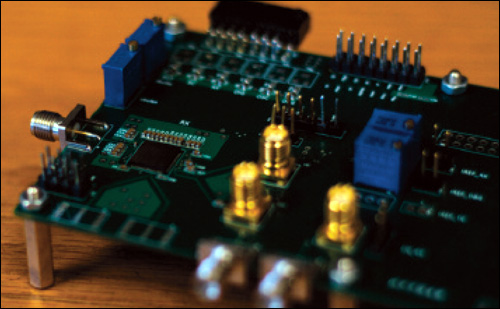In 2011, Shadi Ebrahimi-Asl, a Ph.D. student at the Missouri University of Science and Technology, in Rolla, Mo., was seeking a thesis project. Her supervisor, Prof. Maciej Zawodniok, suggested she focus on something related to radio frequency identification because he had received some grant money from the National Science Foundation for an RFID project. Ebrahimi-Asl had no background in RFID, but she began delving into how passive ultrahigh-frequency tags and readers communicate. She discovered a potential opportunity to improve system performance by enabling readers to read multiple tags that are in close proximity.
With a passive UHF system, tags reflect a signal from the reader using a technique called backscatter. The reader cannot interpret multiple backscatter signals from multiple tags, so it runs through an anticollision algorithm, dictated by the air-interface protocol standard, to communicate with one tag at a time. But even when tags in the read field are not responding to commands from the reader, energy from the reader antenna reflects off their antennas, creating interference that makes it harder for the reader to receive a signal from the tag with which it’s communicating.
During her research, Ebrahimi-Asl learned that the induced electrical charge on an antenna can be reduced to reach the antenna’s minimum backscatter potential (or increased to reach its maximum backscatter potential). When an antenna is in this minimum backscatter state, it is called an “invisible” antenna.
There are currently no RFID chips capable of staying in a minimum scatter state for a sustained interval, but Ebrahimi-Asl built a backscatter antenna in the lab and changed the load on it to make it remain invisible to the reader. She demonstrated that by doing so, she could more easily read a tag close behind it. This capability, if built into passive UHF tags, could make it easier to read tags spaced closely together. It would also increase the read range of passive UHF readers by reducing interference from multiple tags in the read field.
Ebrahimi-Asl has applied for a patent and is doing additional research to see how placing a tag on different materials, such as paper, plastic and corrugated cardboard, affect the ability to change the state of the antenna. She is also looking to collaborate with a passive UHF RFID chip manufacturer to develop a prototype tag that could change the state of the antenna to stay invisible while other tags are being read. The tag would also have to be capable of listening to the reader so it can change its state back to maximum backscatter if interrogated by the reader.
This simple technique, which likely wouldn’t add significantly to the cost of the tag, could potentially solve the performance problems caused when readers interrogate multiple tags that are in close proximity—say, on a retail shelf. Not a bad finding for a researcher who stumbled upon RFID.


